First Worldwide Fully Autonomous System for Inspection and Maintenance
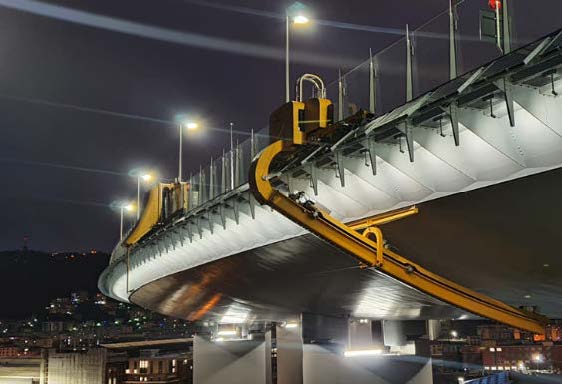
There are four, of two different types, and they are a unique case in the world: they are the robots that will take care of keeping clean and inspecting the new Genoa Bridge(Genoa –Italy). Despite being prototypes, they are fully operative having already executed their first round of tasks. These two robots have opened a new era in I&M of infrastructures, by demonstrating the possibility of installing autonomous machines on (new or old) infrastructures. The two robots, each weighing over 2 tons, represent for now the first known example of the application of robotics to monitoring infrastructures, and are designed in a modular way to be able to be adapted even to completely different situations, such as monitoring a skyscraper. The cabin of robots is like Roller Coasters that run on two tracks in an amusement park and go up and down making adventures. But inside those cabins there will be no human beings, but only sophisticated electronic equipment, while the long telescopic arm extends from their body. So, therefore, the robots will take care of the San Giorgio bridge. More precisely, the first, the robot wash, will keep the windbreak barriers of the bridge and the photovoltaic panels installed outside the structure clean, while the second will regularly scan the lower surface of the bridge thanks to numerous sensors arranged along a retractable arm 17 meters long. Read More
Grant4Tech - Bayer Challenge
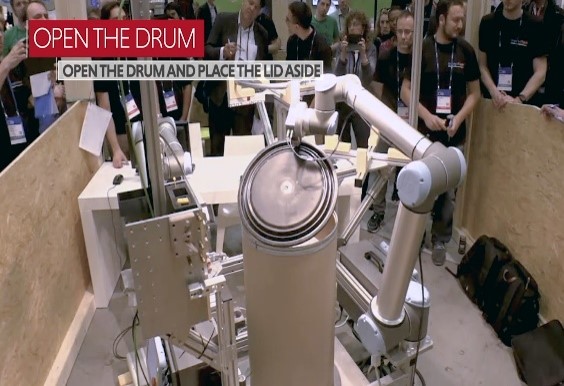
With the Grants4Tech robotic challenge, Bayer aims to strengthen the bond between the Lifescience industry and academic robotic research communities and enthusiasts. We aim for a complete new class of applications based on modern robotics. The task: sampling of powder for quality control from a drum of incoming raw materials is done hundreds of times a day at each of our multiple sites worldwide. Solving this challenge will have a disruptive impact to future operations and robotic applications. You are challenged to use robotic hardware and develop the software to open the drums and the inner bag. The step of filling the sample into the bottle is explicitly not core of the challenge but optional. Anyhow the more steps the robot executes successfully, the higher the ranking in the final. Read more
The Biomedical application of Haptics plays a fundamental role in understanding the peripheral neuropathies
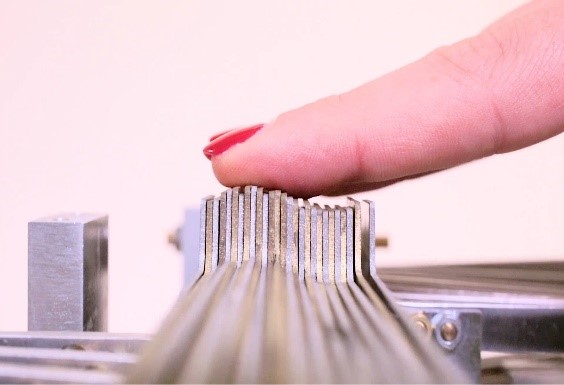
One of the main bottleneck in medicine is objective measurements. The medical practitioner is the only metric for the assessment, results being affected by his sensitivity and experience. ARDITA (Autonomous Reconfigurable Device for Investigation on Tactile Haptics) is able to give a repeatitive input and measure the output, i.e. Responses, of the patients. It thus standardizes the results, and has an accuracy in peripheral sensitivity the same of Electomiography. This device was the first to assess this quantity and is patented. Read more
IRCRAM
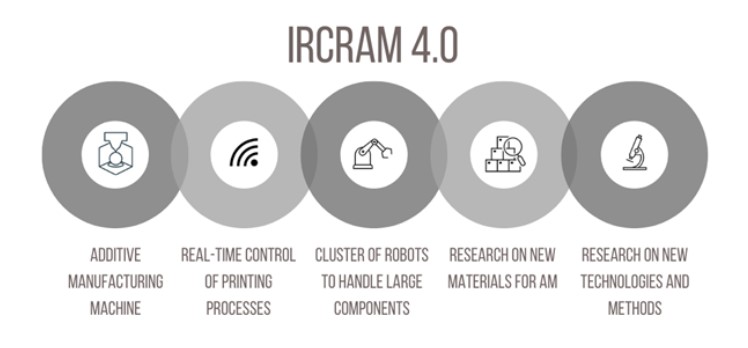
The IRCRAM4.0 project, a new methodology to approach the design and construction of Additive Manufacturing (AM). Fusion Deposition Modeling products for applications of large dimensions. IRCRAM(International Research Center for Robot and Additive Manufacturing) 4.0, is a multidisciplinary project, founded by the European Regional Development Fund of Regione Lombardia. It fosters the renovation of current manufacturing technologies by exploiting the enhanced design capabilities of Additive Manufacturing and simultaneously improving the safety conditions during manual operations. The goals involve the development of an acquisition system to monitor and control the physical features of the printed material, the implementation of a cluster of robots to safely manipulate the final products, and the study of new materials. Read more
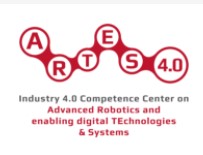
ARTES 4.0 is a Competence Center on Advanced Robotics and enabling digital Technologies and Systems, of which IIT is a founding member.
IIT is managing one of the 13 macro-nodes, clusters of members (called nodes), that constitute the Competence Center.
ARTES 4.0 groups together research institutes, universities, innovative companies and aims at answering companies’ needs in the field of robotic technologies, by providing both training and advising and industrial research. Read more